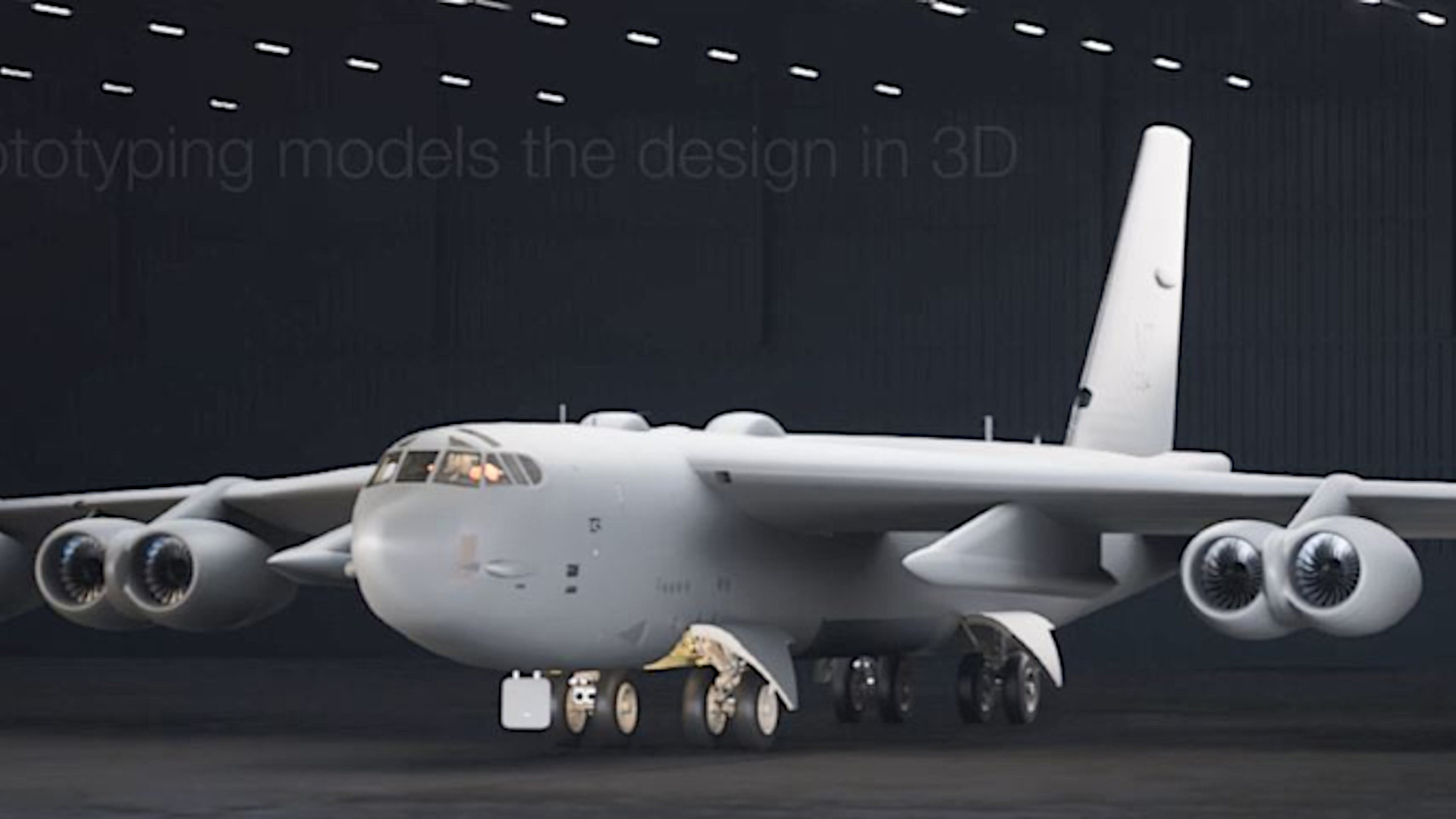A new computer-generated rendering from Boeing offers a window into what the U.S. Air Force’s fleet of B-52H bombers will look like after receiving a host of upgrades in the coming years. The company had previously revealed that the next iteration of the B-52 – which may ultimately receive the designation B-52J or B-52K – would feature noticeably larger underwing engine pods to accommodate new Rolls-Royce F130 turbofans. But the new rendering goes well beyond that, offering a freshened-up, more streamlined, reworked Stratofortress.
Air & Space Forces Magazine‘s John Tirpak was the first to publish the rendering, seen in part above and in full below. This appears to have been cropped from a larger image based on a partial string of text along the top, what’s left of which reads “System Prototype models the design in 3D.” The outlet did note that “the image was rendered from a digital prototyping model and is likely to closely resemble the final version.” The War Zone has reached out to Boeing for more information.

The new engine pods, part of a larger re-engining effort, are immediately apparent, but have also been publicly shown before. In September, Boeing released a video containing views of a B-52 wind tunnel model with the revised pod arrangement. A full-size mockup of one of the pods – each of which will contain two F130s – was also on display at the Air & Space Force’s main annual convention, held just outside of Washington, D.C. that same month.
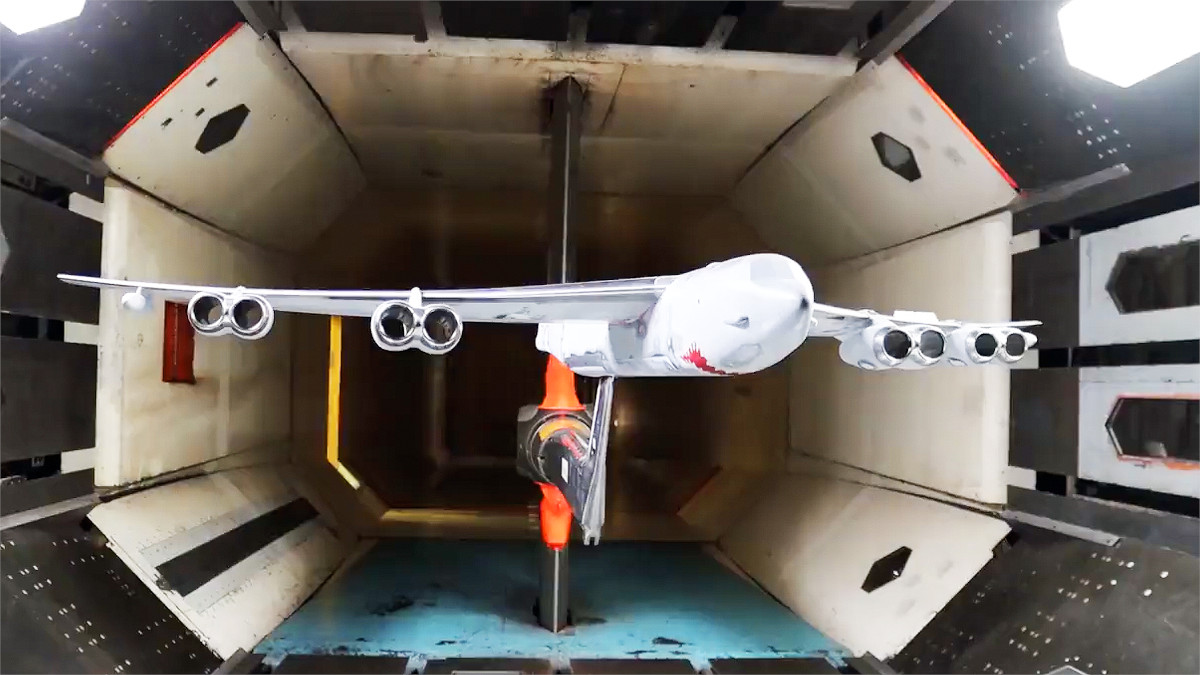
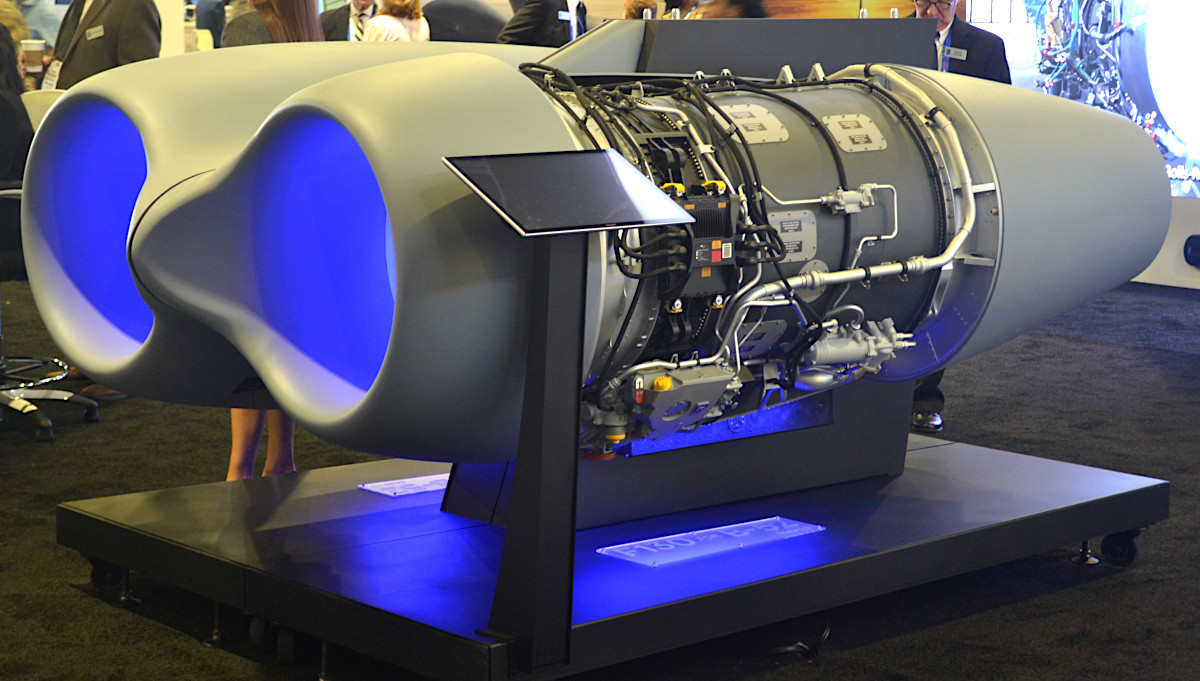
The re-engining program, which will also include a slew of other internal changes and additions, including the installation of digital engine control systems, is one of the most significant upgrades for the Air Force’s B-52s in decades. The change from dated and long-out-of-production Pratt & Whitney TF33 turbofans to the new F130s is set to increase the aircraft’s range, enhance field performance, improve fuel economy, and reduce maintenance and logistics costs and burdens, among other improvements, which you can read more about here.

Maybe most intriguing is that the new rendering shows a revised nose section for the B-52 that takes the jet back to its classic look. The pair of fairings under the nose has been eliminated entirely. First added to B-52G and B-52H variants in the 1970s, the two enclosures together formed the AN/ASQ-151 Electro-Optical Viewing System (EVS), with the right one holding a Hughes AN/AAQ-6 forward-looking infrared (FLIR) system and the left one containing a Westinghouse AN/AVQ-22 low-light-level television (LLLTV) system. The EVS’s main purpose was to help crews fly safely at very low altitudes, but together they also had secondary, albeit very limited, surveillance and reconnaissance capabilities.
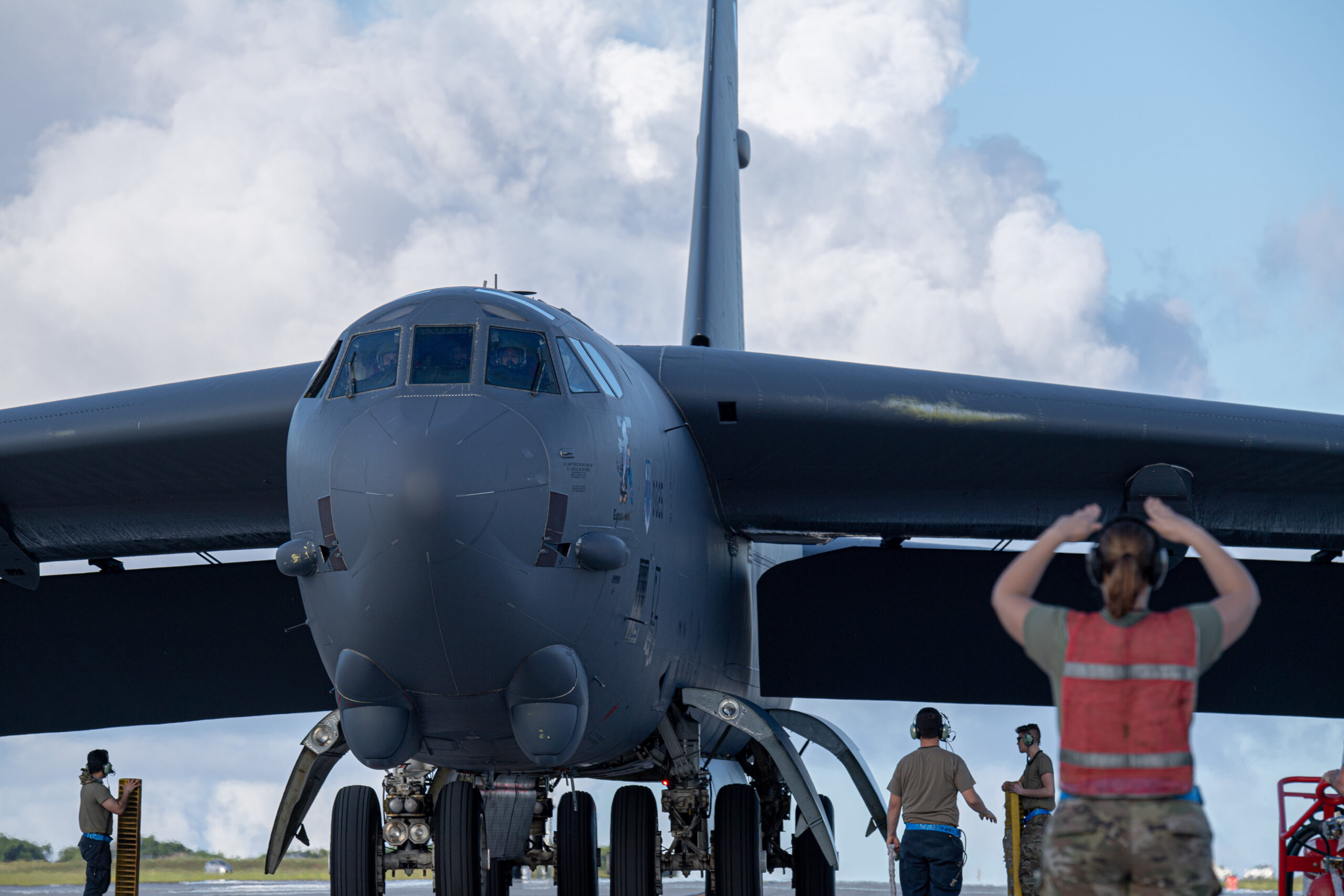
The EVS on the Air Force’s remaining B-52Hs has already been more or less supplanted, at least in some way, by modern targeting pods – either Lockheed Martin Sniper or Northrop Grumman LITENING types – installed on pylons under the bombers’ left wings. Also, its low-level penetration mission has waned over the post-Cold War years.

The Air Force has said in the past that it is interested in potentially relocating the position of the targeting pod, or an equivalent capability, somewhere else on the B-52. However, the rendering does not appear to show any relocated or new sensor system that would fit this description.
The new nose sections on the updated bombers will also contain AN/APG-79 active electronically scanned array (AESA) radars, another forthcoming upgrade for these aircraft. The variant of the radar that will be used on the B-52s is a scaled version of the set found in the F/A-18E/F Super Hornet and EA-18G Growler, as well as remaining USMC legacy F/A-18s.
The AN/APG-79 will give the B-52s greatly improved radar range, fidelity, countermeasure resistance, situational awareness, and other capabilities. The radar could even support electronic warfare and communications capabilities, and the aircraft’s targeting pod can be slaved to it and vice versa, which could help with target acquisition and identification, including aircraft, among other things.
It’s not entirely clear from the angle we have of the rendering, but the new radar, plus the elimination of the EVS fairings, may come along with a major reprofiling of the B-52’s nose itself. These improvements would likely lower drag and improve efficiency further. Oncr again, this would also give the aircraft an appearance that is somewhat remenicent of early B-52 variants.
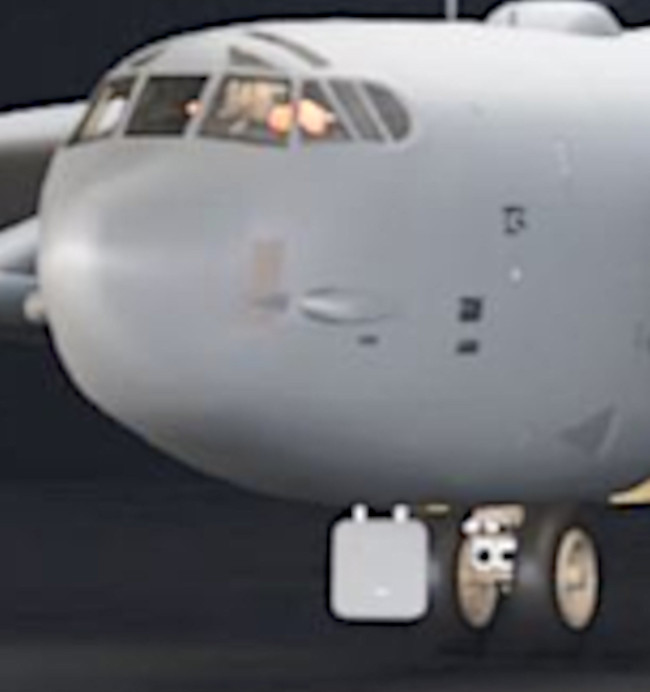
The rendering does show two curious new humps on top of the aircraft near where the wings join the fuselage, the purpose or purposes of which are unclear. Air & Space Forces Magazine said a Boeing spokesperson told the outlet that they are “not new and not part of our program” and “I have nothing for you on that.”
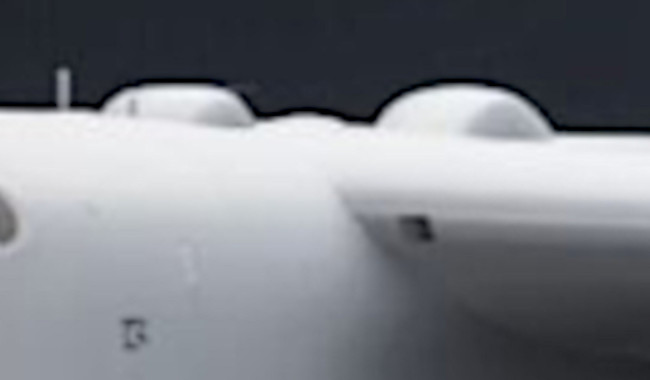
The two humps in the rendering appear to be slightly different in their shapes, but both profiles are among those commonly associated with wideband satellite communications systems. As of 2018, at least, the Air Force B-52Hs were set to receive improved GPS systems and Link-16 datalinks, as well as new low-frequency (LF), very-low-frequency (VLF), Advanced Extremely High Frequency (AHEF) communications suites, among other smaller upgrades.
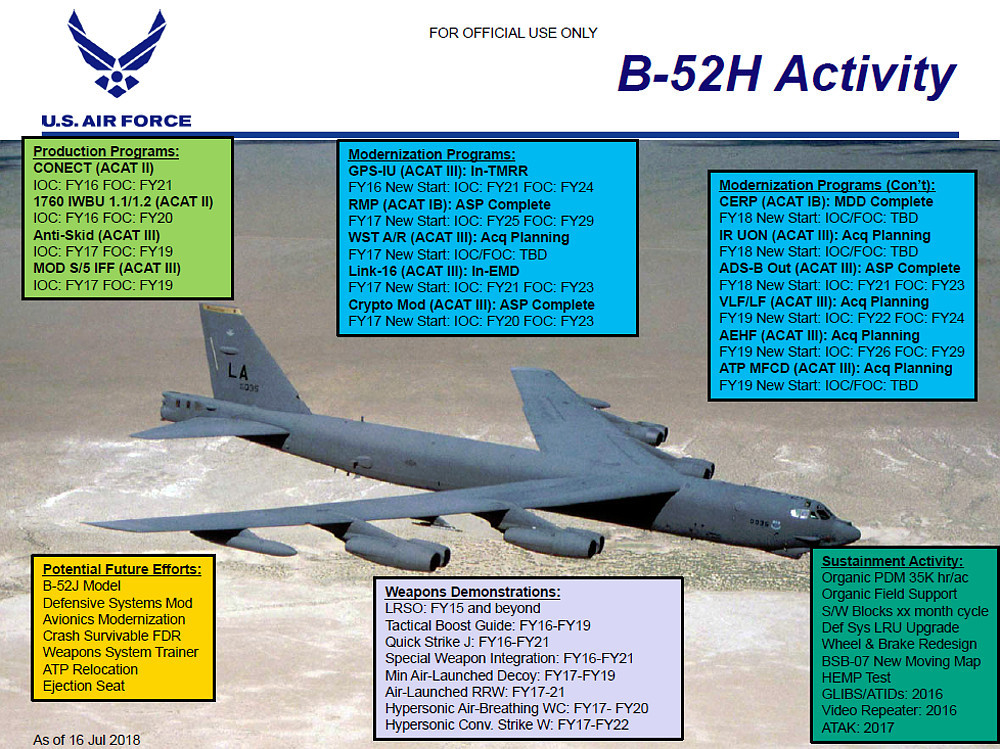
It’s unclear from the rendering whether the underwing stores pylons, which lack any sort of fine detail, are meant to reflect a particular design or are simply placeholders. The one under the right wing, which is not clearly visible, may be intended to show it loaded with a large missile, such as the AGM-183A Air-Launched Rapid Response Weapon (ARRW) hypersonic missile. The Air Force has talked about acquiring new stores pylons for the B-52 with greater load capacities in the past and Boeing has been working on a design with a 20,000-pound weight rating, which it calls Hercules, using internal research and development (IRAD) funds.


The Air Force’s B-52s are also set to receive various internal upgrades and modifications beyond those directly related to the engine work. Earlier this week Air & Space Forces Magazine separately published an exclusive picture the outlet obtained from Boeing showing an upgraded cockpit layout. The most significant change is the replacement of an iconic large array of ‘steam gauge’ dials in the center panel with two large digital multi-function displays (MDF). Two additional smaller digital MFDs are installed in place of existing display units that are situated on either side in front of the pilot and co-pilot.
Other cockpit improvements include will include a “hybrid mechanical-to-digital throttle system, new data concentrators units (2x), new engine fault maintenance recorder, new engine air data system (and) modified system panels, as well as structural, electrical, pneumatic and hydraulic updates associated with this modernization effort,” Boeing said in a statement to Air & Space Forces Magazine.
There are also plans to integrate a new electronic warfare suite onto the B-52’s to improve their defensive and situational awareness capabilities.
Altogether, the Air Force’s B-52Hs are set to be significantly updated all over in the coming years to help keep the bombers operationally relevant through at least 2050 (and likely far beyond), at which point they will have been in service for nearly 80 years. Beyond the various updates to the aircraft itself, the Air Force plans to add a variety of new weapons to their arsenal, including the ARRW. The bombers are very likely to see additional smaller upgrades and improvements to expand the functionality of existing systems in the coming decades, as well.
The substantial nature of the changes and additions to the jets means that the Air Force is also looking at formally changing their nomenclature. This would produce the first new designation in the B-52 line since the H variant in the early 1960s. The B-52Hs, the last of which rolled off Boeing’s production line in 1962, were based on the preceding B-52G design, but featured then-new TF33 engines and other improvements. The H models were the final new-production B-52s.
The Air Force is still unsure of exactly when and how it will redesignate the remaining B-52s once they begin receiving various upgrades. The service believes that the addition of the AN/APG-79 radars will require major changes to existing operator and maintenance manuals, which could immediately prompt a need for a new designation, likely B-52J. However, bombers with new radars are expected to start returning to service before any of them get the engine upgrades, which may then similarly demand a second redesignation. If that happens, the final upgraded configuration could end up being referred to as B-52K.
No matter what, the Air Force’s B-52Hs, the very youngest of which have already been in service for 60 years, look set to get a slicker updated look as they receive their most significant upgrades in decades.
Contact the author: joe@thedrive.com
